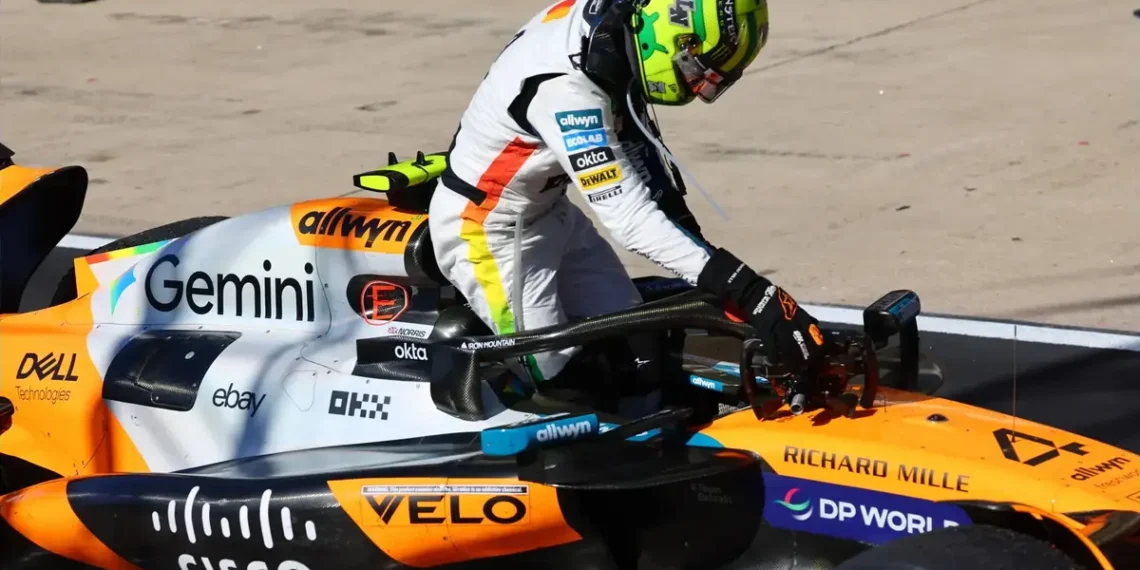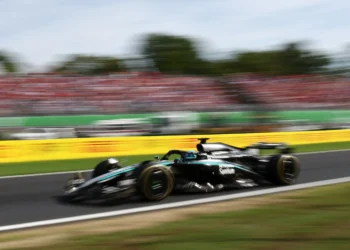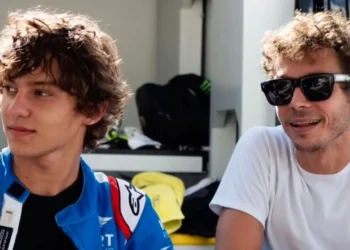F1 STAR LANDO NORRIS SLAMS TRACK LIMITS RULES: “ONE OF THE DUMBEST THINGS WE HAVE!”
In a fiery outburst that has sent shockwaves through the motorsport community, McLaren’s rising star Lando Norris has taken aim at the controversial track limits regulations in Formula 1, declaring that they are stifling the excitement of on-track battles. After an exhilarating race at the United States Grand Prix, where he clinched an impressive second place, Norris revealed his frustrations over what he describes as an unjust penalty system that unfairly penalizes drivers for competing fiercely.
During the intense race in Austin, Norris found himself battling with Ferrari’s Charles Leclerc, a duel that saw him overtaking Leclerc not once, but twice! However, the thrill of the chase quickly turned sour as Norris racked up three warnings for exceeding track limits even before he engaged in his first overtaking maneuver. This left him walking a tightrope for the remainder of the race, knowing that a single misstep could lead to a five-second penalty—an outcome that could have devastating consequences for his position.
“It’s one of the dumbest rules we have,” Norris exclaimed, voicing his exasperation. He was particularly aggrieved after receiving a warning while attempting to pass Leclerc, a move he argued provided him no competitive advantage. “We are encouraged to race, but if we actually go for it, we get punished for it,” he stated, highlighting the absurdity of the situation.
Norris’s third warning came as he attempted to execute a daring maneuver at Turn 13, only to be penalized for what he felt was a legitimate racing incident. “One of my warnings was for fighting for position,” he lamented. “I even lost time trying to get past Charles, but it still counted against me. It doesn’t make much sense.”
The challenging conditions in Austin, particularly the unpredictable winds at Turn 19, compounded the difficulties faced by the drivers. Norris wasn’t alone in his struggles; over half of the drivers on the grid received at least one warning for exceeding track limits on the predominantly asphalt-laden track.
The track limits rules allow officials to rescind warnings if a driver has been forced off the track, but Norris argues that enforcement has become excessively strict, stifling the very essence of racing. His candid remarks have sparked a debate about the necessity of reforming these regulations to preserve the competitive spirit of Formula 1.
Despite the challenges, Norris’s determination shone through as he gambled just enough to secure his hard-fought second place finish. “I made some early mistakes and had to be more cautious, but I still took the risks necessary to get to P2,” he concluded.
As the Formula 1 world watches closely, Norris’s bold stance raises critical questions about the balance between safety, fair play, and the exhilarating thrill of competition. Will the governing bodies of F1 heed his call for change? Only time will tell, but one thing is clear: Lando Norris is not afraid to speak up for what he believes in, and his voice is one that resonates with fans and drivers alike.










